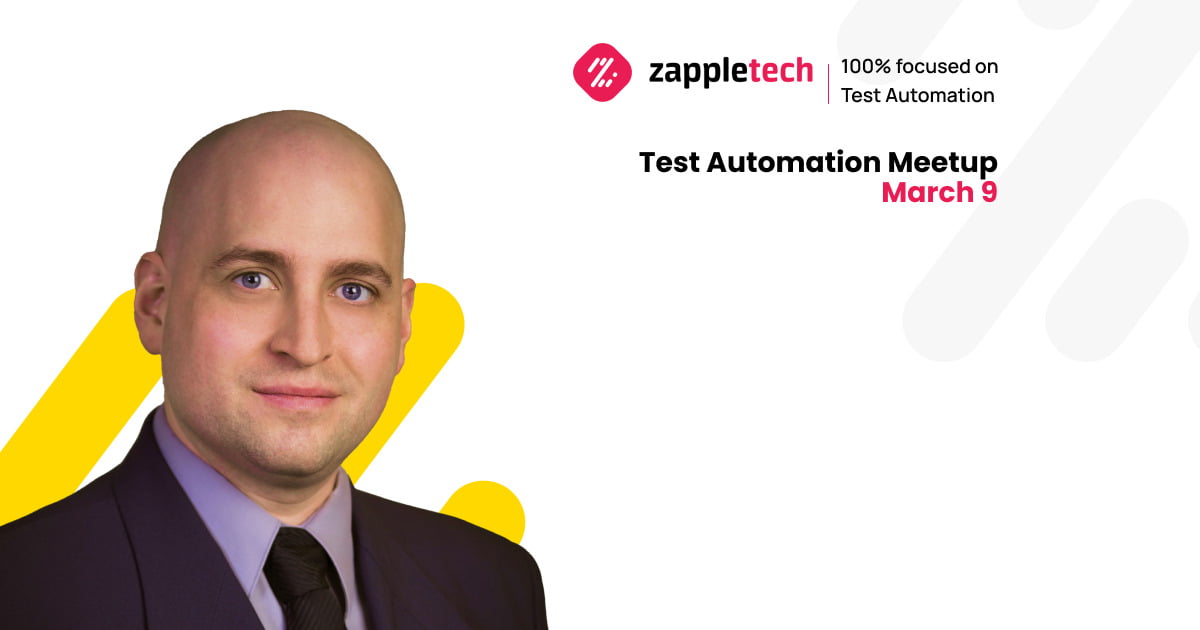Thomas Haver, a scientist and software developer with a background in biophysics, spoke at the Test Automation Meetup in March about what RPA is, its benefits, and use cases. And also conducted a comparison of RPA tools.
Robotic Process Automation (RPA) is a term given to technology that allows developers to programmatically emulate the actions of a human to execute a business process. RPA often executes on the user interface (UI) layer to capture data or interact with an application or across multiple applications to perform tasks that are considered repetitive or time-consuming.This technology is based on metaphorical bot software that can take over time-consuming tasks. What is a bot? Bots can be of different types, but the main ones are attended and unattended.Table of Contents
Benefits of RPA
- Fast Return On Investment (ROI).
- Minimal upfront investment for Proof Of Concept (POC).
- Limited disruptions on the systems they interact with for automated workflows.
- Commercial tooling includes libraries of automation workflows applied to specific app types and industry use-cases. Therefore, buying RPA is more reasonable than assembly.
- Human data entry is prone to error for repetitive tasks, which is directly addressed with automated workflows.
- Tooling has activity logging to help identify failure points so the cause of those exceptions can be fixed.
- The logging of RPA activity has an additional benefit of helping to ensure regulatory compliance.
- Risk of revealing Personally Identifiable Information (PII).
- Sarbanes-Oxley (SOx) Act compliance.
- Program never proceeds beyond initial or POC stages.
RPA Use Cases
Use Cases #1 – Text Analysis
- Scanning documents.
- HR: assist with payroll, employee & contractor onboarding, terminations, and benefits administration.
- Ops: inventory management, invoicing, planning, and content scanning of contracts.
- Service Desk: password resets, scheduling appointments, address changes.
Use Cases #2 — ATM Data Processing
- ATM results in a great deal of data being transferred between the machines and back-end systems
- A bot can extract and compare data records for multiple systems (web and desktop) to improve the processing speed of data records and reduce the time needed to handle data.
Use Cases #3 – Account Creation
Streamline an account creation process that would typically be hundreds of new accounts per month at about 6 minutes per account that crossed three different applications.This process had multiple decision points around mortgage length, credit ratings, and customer status.Tool Comparison
One cannot say that one tool is better than all the others. Therefore, when choosing it should be based on what you need.Blue Prism
- Blue Prism design studio has a low technical hurdle compared to most traditional automation but does require some programming.
- Drag and drop UI design.
- Citrix and virtual desktop infrastructure (VDI) integration.
- Third-party accreditation for certification.
Automation Anywhere
- Originally focused on desktop solutions but expanded their offerings to include most application types.
- Building RPA workflows in Automation Anywhere also has a low technical hurdle.
- Advanced workflows require knowledge of XML or C#.
- The platform provides a central control feature, scheduling, and triggering capabilities.
- Accreditation for certification.
Power Automate
- Cloud-native, low-code automation platform with UI- and API-based automation.
- Offers training and learning resources as part of their partner program.
- Focused on a solution that has a low entry barrier.
- Scope of the platform includes process discovery, automation ideation, ROI calculation, and portfolio management. Native support for OCR, document handling, analytics, etc.
- The “AI Builder” has prebuilt and customizable AI models for processing structured and unstructured content.
UiPath
- UiPath offers a Robotic Process Automation platform with integrations for cloud orchestration, testing, and AI.
- They have a customer base in excess of 3,000 including many Fortune 500 companies and in 2021 were valued at $35 billion.




